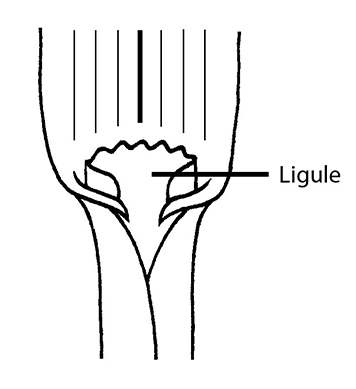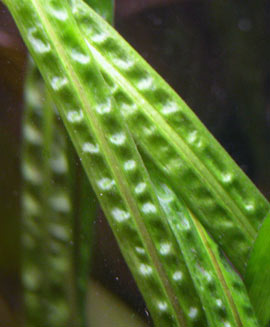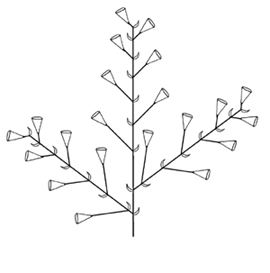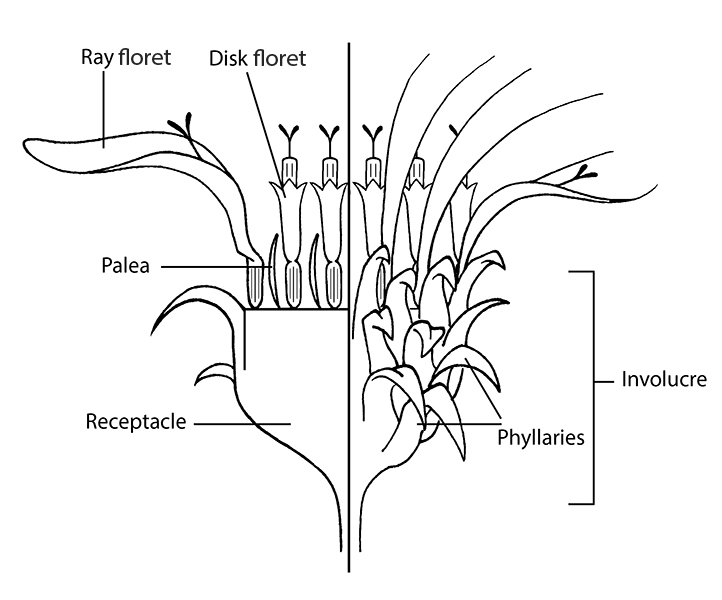Thalia L.
water canna, powdery alligatorflag, Indian bayou, powdery thalia
Marantaceae
Canna, Monochoria, Pontederia, Schumannianthus
America
Thalia dealbata Fraser
T. geniculata L.
Australia
not weedy
emergentemergent:
(adj) (syn. emersed) with parts raised out of the water; extending up out of the water
 , broad-leaved rosetterosette:
, broad-leaved rosetterosette:
(n) a radiating cluster of leaves, usually close to the ground at the base of a plant
 plant
plant
Perennial. Emergentemergent:
(adj) (syn. emersed) with parts raised out of the water; extending up out of the water
 , tall. Stem narrow and rhizomatousrhizomatous:
, tall. Stem narrow and rhizomatousrhizomatous:
(adj) possessing rhizomes
 . Leaves al ternateternate:
. Leaves al ternateternate:
(adj) in threes
 ; petiolepetiole:
; petiolepetiole:
(n) the stalk of a leaf
 narrow, sheathed; leaf bladeblade:
narrow, sheathed; leaf bladeblade:
(n) (syn. lamina) the flat, expanded part of a leaf, frond, or petal (excluding, e.g., the petiole)
 broad ovateovate:
broad ovateovate:
(adj) egg-shaped in outline; generally with the broad end at or near the base
 -lanceolate, venationvenation:
-lanceolate, venationvenation:
(n) the arrangement of veins in a leaf
 pinnate, laterallateral:
pinnate, laterallateral:
(adj) on or pertaining to the side of an organ or structure
 veins closely spaced and parallel; marginmargin:
veins closely spaced and parallel; marginmargin:
(n) edge; rim
 entire. Inflorescenceinflorescence:
entire. Inflorescenceinflorescence:
(n) the arrangement of flowers on the floral axis
 an open, bracteatebracteate:
an open, bracteatebracteate:
(adj) possessing or bearing bracts
 paniclepanicle:
paniclepanicle:
(n) an indeterminate, branched (often much-branched) inflorescence; the ultimate units may be of a different inflorescence type
 . Flowers in sessilesessile:
. Flowers in sessilesessile:
(adj) attached directly, without a stalk
 pairs, zygomorphiczygomorphic:
pairs, zygomorphiczygomorphic:
(adj) bilaterally symmetrical; symmetrical along only one plane
 ; sepals 3, subequal; petals 3, fused at base. Dispersal by seed.
; sepals 3, subequal; petals 3, fused at base. Dispersal by seed.
lakes, swamps, and rivers
A genus with six species, with only a few aquatic. Thalia dealbata is the species most commonly cultivated for ponds. Thalia geniculata is slightly smaller than T. dealbata and has characteristic red stems basally.